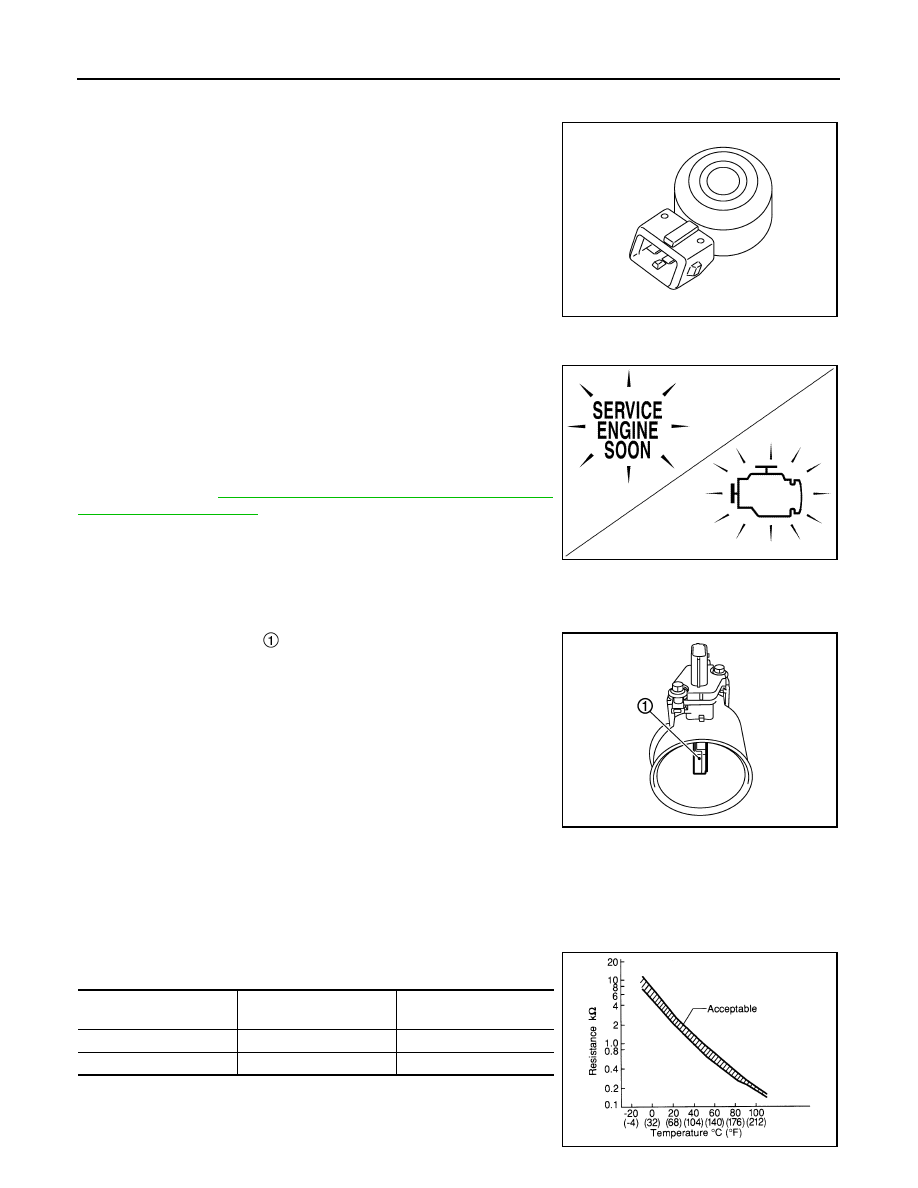Nissan Pathfinder. Manual - part 430

EC-26
< SYSTEM DESCRIPTION >
[VQ35DE]
COMPONENT PARTS
Knock Sensor
INFOID:0000000009178025
The knock sensor is attached to the cylinder block. It senses engine
knocking using a piezoelectric element. A knocking vibration from
the cylinder block is sensed as vibrational pressure. This pressure is
converted into a voltage signal and sent to the ECM.
Malfunction Indicator Lamp (MIL)
INFOID:0000000009178026
Malfunction Indicator lamp (MIL) is located on the combination
meter.
MIL will illuminate when the ignition switch is turned ON without the
engine running. This is a bulb check.
When the engine is started, MIL should turn OFF. If the MIL remains
illuminated, the on board diagnostic system has detected an engine
system malfunction.
For details, refer to
EC-58, "DIAGNOSIS DESCRIPTION : Malfunc-
.
Mass Air Flow Sensor (With Intake Air Temperature Sensor)
INFOID:0000000009178027
MASS AIR FLOW SENSOR
The mass air flow sensor is placed in the stream of intake air. It
measures the intake flow rate by measuring a part of the entire
intake flow. The mass air flow sensor controls the temperature of the
hot wire to a certain amount. The heat generated by the hot wire is
reduced as the intake air flows around it. The more air, the greater
the heat loss.
Therefore, the electric current supplied to hot wire is changed to
maintain the temperature of the hot wire as air flow increases. The
ECM detects the air flow by means of this current change.
INTAKE AIR TEMPERATURE SENSOR
The intake air temperature sensor is built-into mass air flow sensor. The sensor detects intake air temperature
and transmits a signal to the ECM.
The temperature sensing unit uses a thermistor which is sensitive to the change in temperature. Electrical
resistance of the thermistor decreases in response to the temperature rise.
<Reference data>
*: These data are reference values and are measured between ECM terminals.
JSBIA0284ZZ
JSBIA1315ZZ
PBIA9559J
Intake air temperature
[
°C (°F)]
Voltage
*
(V)
Resistance (k
Ω)
25 (77)
3.3
1.800 - 2.200
80 (176)
1.2
0.283 - 0.359
SEF012P